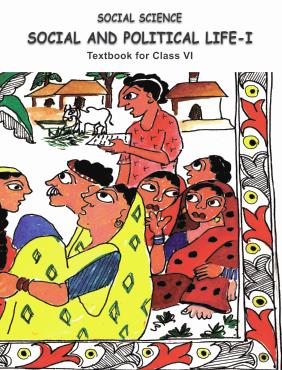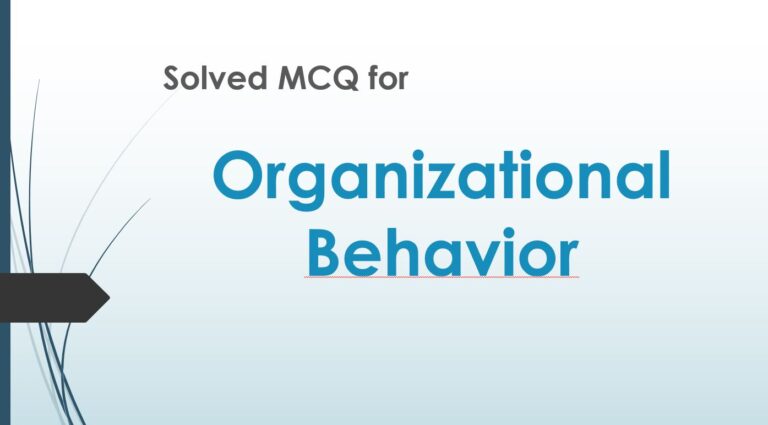Class 6 - Social Science : Social & Political Life I
Chapter 8 : Rural Livelihoods

Top Block 1
NCERT Solutions Class 6 Social Science Rural Livelihoods
1.You have probably noticed that people in Kalpattu are engaged in a variety of nonfarm work. List five of these.
Answers : (i) Making baskets, utensils, pots, bricks bullock-carts etc.
(i)Teaching
(ii)Washing clothes
(iii)Weaving
(iv)Repairing cycle.
2. List the different types of people you read about in Kalpattu who depend on farming. Who is the poorest among them and why?
Answers : These people are Thulasi, Sekar and Ramalingam.
Thulasi is the poorest among them. It is because she has no land of her own. She works on Ramalingam’s field and earns Rs. 40 per day. Although she is not satisfied with her wages, yet she continues her work in Ramalingam’s field because of the fact that she can depend on him.
3. Imagine you are a member of a fishing family and you are discussing whether to take a loan from the bank for an engine. What would you say?
Answers : I would say that it is better to take a loan from bank for this purpose than to go to a moneylender. Money lenders usually charge high rate of interest which pushes the borrowers in great hardships.
4. Poor rural labourers like Thulasi often do not have access to good medical facilities, good schools, and other resources. You have read about inequality in the first unit of this text. The difference between her and Ramalingam is one of inequality. Do you think this is a fair situation? What do you think can be done? Discuss in class.
Answers : No, this is not a fair situation. There should be a ceiling of land. It will help everyone to have some land where one can earn one’s livelihood. Opportunity should be equal for all. Primary education should be made compulsory. Efforts should be made to promote education among the poor. It will help them know their rights and other awareness.
5. What do you think the government can do to help fanners like Sekar when they get into debt? Discuss.
Answers : Government can provide assistance to farmers like Sekar. Interest-free loan or loan at the lowest rate can help him. Seeds, fertilizers and pesticides can also be provided to him on subsidised rate.
6. Compare the situation of Sekar and Ramalingam by filling out the following table:
| Sekar | Ramalingam | |
|---|---|---|
| 1. Land cultivated | ||
| 2. Labour required | ||
| 3. Loans required | ||
| 4. Selling of harvest | ||
| 5. Other work done by them |
Answers :
| Sekar | Ramalingam | |
|---|---|---|
| 1. Land cultivated | Two acres. | Twenty acres. |
| 2. Labour required | No labour required. | He hires labour. |
| 3. Loans required | He requires loan for seeds, fertilizers, pesticides etc. He takes loan from the trader. | He takes loans from govt, bank for establishing a rice mill. |
| 4. Selling of harvest | He sells a few bags of paddy to pay back the loan. | |
| 5. Other work done by them | He has a hybrid cow, whose milk he sells in the local milk cooperatives. | He owns a rice mill and a shop selling seeds, pesticides etc. |
I.MULTIPLE CHOICE QUESTIONS
Choose the correct option to complete the statements given below:
(i) Ramalingam has …………
(a)Thirty acres of land (b)Twenty acres of land
(c) Ten acres of land (c)Five acres of land
(ii) Thulasi earns ………..
(a) Rs. 40 per day (b) Rs. 60 per day
(c)Rs. 70 per day (d) Rs. 100 per day
(iii) Thulasi sold her cow to ……… .
(a)Purchase jewellery
(b)Pay the instalment of the loan that she took from bank
(c) Pay the fees of her daughter
(d)Pay back the money she borrowed from Ramalingam.
(iv) The percentage of large farmers in India is …………..
(a) 80 (b) 20
(c)10 (d) 5
(v) Which one is not a farming activity?
(a) Ploughing (b) Harvesting
(c) Basket making (d) Weeding.
Answers : (i)—(b), (ii)—(a), (iii)—(c), (iv)—(b), (v)—(c).
II.FILL IN THE BLANKS
Fill in the blanks with appropriate words to complete each sentence:
(i)The people of Chizami village do ………………………………………….. farming.
(ii) Nearly ……. of all rural families are agricultural labourers in India.
(iii) Sekar has a hybrid cow, whose milk he sells in the local ………………
(iv) In some villages in central India, both farming and ……………….. from forest are important sources of livelihood.
(v) The people of Pudupet village earn their living by………………
Answers : (i) terrace (ii) two fifth
(iii) milk cooperative (iu) collection
(v) fishing
III.TRUE/FALSE
State whether these sentences are true CD or false (F).
(i)Ramalingam is a big farmer having twenty acres of land.
(ii) Sekar takes loan from Thulasi and buys seeds and fertilizers.
(iii) In coastal areas we find fishing villages.
(iv) In India 60 percent farmers are small Farmers.
(v) Sekar takes help of other small farmers at the time of harvesting.
Answers : (i) True, (ii) False, (iii) True, (iv) False, (v) True.
IV.MATCHING SKILL
Match the items in column A correctly with those given in column B.
| Column A | Column B |
|---|---|
| 1. Thulasi | A. Tamil Nadu |
| 2. Sekar | B. Fishing |
| 3. Ramalingam | C. A poor landless labourer |
| 4. Aruna and Paarivelan | D. None farming activites. |
| 5. Kalpattu | E. A large farmer |
| 6. Teaching, washing | F. A small farmer |
Answers : (i)—(c), (ii)—(f), (iii)—(e), (iv)—(b), (v)-(a), (vi)-d
Mddle block 1
V.VERY SHORT ANSWER TYPE QUESTIONS
1. What is the main crop of Kalpattu village?
Answers : The main crop of Kalpattu village is paddy.
2. How is Ramalingam different from others according to Thulasi?
Answers : Unlike others, Ramalingam does not go looking for cheaper labour from other villages. Whenever there is work, he calls Thulasi.
3. What does Thulasi’s husband do when he finds no work on the farm?
Answers : In such situation he finds work outside either loading sand from the river or stone from the quarry nearby.
4. Why did Thulasi borrow from Ramalingam?
Answers : She did so for her daughter’s treatment.
5. How did she pay back the loan to Ramalingam.
Answers : She paid back her loan to Ramalingam by selling her cow.
6 Name some other activities which poor families in rural areas often do for the household apart from farming. [V. Imp.]
Answers : Collecting firewood, getting water and grazing cattle.
7. Why do people migrate? [V. Imp.]
Answers : People migrate from rural to urban areas to find job. .
8. How much land does Sekar own?
Answers : Sekar owns two acres of land.
9. How does he pay back the loan to trader?
Answers : He pays back the loan to trader by selling his paddy to him at a lower price.
10. Why does Sekar need to earn some extra money?
Answers : Whatever he produces last only eight months. So, he needs to earn some extra money.
11. What work does Sekar do at Ramalingam’s rice mill?
Answers : He helps Ramalingam collect paddy from other farmers in the neighbouring villager.
12. Why do farmers like Sekar need to borrow money?
Answers : They need to borrow money to purchase basic things like seeds, fertilizers and pesticides.
13. Why do fishermen go far into the sea?
Answers : They go far into the sea to get a better catch.
14. During which period do fish breed?
Answers : They breed during the monsoon.
15. How do fishermen manage during the monsoon period?
Answers : During the monsoon period fishermen survive by borrowing from the trader.
VI.SHORT ANSWER TYPE QUESTIONS
1. Describe different types of work that Sekar do for a living. [Imp.]
Answers : Sekar is a small farmer having only two acres of land. He grows paddy in his field with the help of his family members. He also works in Ramalingam’s rice milk. He helps him collect paddy from other farmers is the neighbouring villages. He also has a hybrid cow, whose milk he sells in the local milk cooperative.
2. List the three situations in which crops can be ruined. [V. Imp.]
Answers : The three situations in which crops can be ruined are :
(a)If the seeds are not of good quality.
(b)If pests attack the crop.
(c)If the monsoon does not bring enough rain.
3. Write a brief note on the lifestyle of the people of Chizami.
Answers : Chizami is a village in Phek district in Nagaland. The people of this village do terrace farming. They have their own individual fields. But, they also work collectively in each other’s fields. They form groups of six or eight and take an entire mountain side to clean the needs on it. Each group eats together once their work for the day is over.
VII.LONG ANSWER TYPE QUESTIONS
1. Write a short note on the lives of fishing families. [V. Imp.]
Answers : Fishing families usually live close to the sea. Their lives revolve around the sea and fish. One can find rows of catamarans and nets lying around their houses. Their day usually starts from 7 O’clock in the morning. This is the time when there is a lot of activity on the beach. After catching fish the fishermen return with their catamarans. Women then gather to buy and sell fish.They do not go to the sea for at least four months during the monsoon because this is when the fish breed. During these months they survive by borrowing from the trader. And thus, they are forced to sell the fish to that trader later on.The lives of fisherfolk are full of risks. Whenever there is a storm, they have to suffer a lot. In 2004, the tsunami hit them badly. They were the worst sufferers.
2. What different activities are done by the people of Kalpattu village?
Answers : Kalpattu is coastal village in Tamil Nadu. As the village is surrounded by low hills, paddy is the main crop here. Most of the families earn a living through agriculture. Besides agriculture, people do many non-farm activities such as making baskets, utensils, pots, bricks, bullock carts, etc. The village has no dearth of service providers like blacksmiths, nurses, teachers, washermen, weavers, barbers, cycle repair mechanics and so on. One can find here shopkeepers and traders too. There is a bazaar where a variety of small shops such as tea shops, grocery shops, a tailor, seed shop etc. can be found. There are some coconut groves around the village. A group of people earn their living by working in mango orchards. In the village, there are small farmers as well as big farmers. There are landless labourers too who work in other’s field.
3. Under which circumstances poor farmers find themselves unable to pay back their loans? What happens after that?
Answers : Poor farmers are bound to take loans for agriculture purpose. Sometimes they successfully pay back the loans but there are also moments when they fail to do that in time because of crop failure. This is a very tough time for them. For the family to survive, they have to borrow more money. Soon the loan becomes so large that no matter what they earn, they are unable to repay. This is when we can say they are caught in debt. Whenever this situation occurs, farmers become helpless. Their helplessness to repay the loan sometimes compel them to commit suicide.



